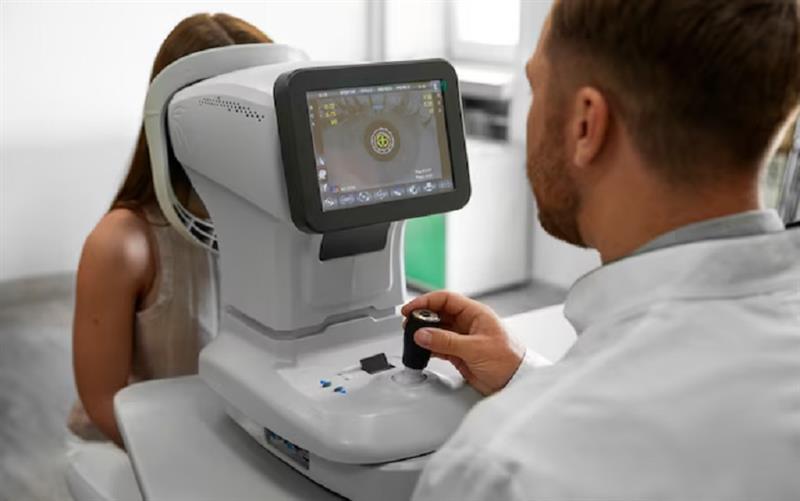
Adopting the newest developments in optical management software is essential to future-proofing your optical practice. These advances, which range from cloud-based solutions and AI automation to tele-optometry and AR-driven retail experiences, boost productivity, increase patient care, and propel company expansion. Optical clinics can keep ahead of the competition and prosper in the constantly changing healthcare industry by implementing cutting-edge technologies.
Rapid technological improvements are occurring in the optical business, and any optical practice's long-term success depends on its ability to stay up to date. At the core of this change is optical management software, which aids in practice efficiency, patient care, and operational streamlining. Understanding the most recent developments influencing optical management software is crucial for staying ahead of the curve.
1. Cloud-Based Optical Software
The optical business is undergoing a change because to cloud-based technologies that provide security, scalability, and accessibility.
Remote Access: To ensure smooth operations, optical professionals can access patient records, inventory, and sales data from any place.
Automatic upgrades: By handling security patches and software upgrades automatically, maintenance headaches are minimized.
Data security: By offering backup alternatives and encryption, cloud storage reduces the possibility of data breaches or loss.
Scalability: Cloud solutions are easily scalable to meet growing demands as the practice expands.
2. AI and Automation for Enhanced Efficiency
Administrative chores are becoming more efficient thanks in large part to artificial intelligence (AI).
Appointment Scheduling: AI-driven technologies streamline patient flow and minimize human error by automating scheduling.
Processing of Claims and Billing: Automated billing guarantees prompt and accurate payment processing.
Inventory control: AI forecasts stock needs to avoid shortages or overstocking.
Data-Driven Insights: AI examines patient data to spot patterns and enhance judgment.
3. Tele-optometry and Virtual Consultations
Optical practices are not an exception to the growing trend of telehealth in the healthcare industry.
Remote Consultations: By allowing patients to consult optometrists online, in-person appointments are no longer necessary.
Digital Prescriptions: Purchasing eyewear and managing medications are made easier with e-prescriptions.
Greater Reach: Remote or underprivileged regions can now obtain eye care thanks to tele-optometry.
Savings: Lowers operating expenses by cutting down on in-clinic consultations.
4. Seamless EHR Integration
Optical clinics are increasingly required to integrate Electronic Health Records (EHR).
Centralized patient data: integrates test results, prescriptions, and medical history into a single system.
Better Coordination: Facilitates easy communication between other medical professionals and optometrists.
Decreased Paperwork: Digitization reduces errors and manual documentation.
Regulatory Compliance: Guarantees compliance with laws governing the exchange of medical data.
5. Enhanced Inventory Management with AI
For optical merchants, effective inventory management is essential.
Automated Reordering: AI anticipates inventory needs and places orders ahead of time.
Real-time tracking: Maintains precise records of the eyeglasses and contact lenses that are available.
Waste Reduction: Gets rid of old inventory and helps avoid overbuying.
Supplier Integration: Enables smooth vendor collaboration for improved inventory control.
6. Mobile Accessibility and Patient Engagement Tools
Mobile-friendly optical management software improves service accessibility for patients.
Online Booking: Patients can use patient portals or smartphone apps to make appointments.
Reminders and Alerts: Automated SMS and email notifications reduce missed appointments.
Prescription Access: Patients can check their eyewear prescriptions from their cellphones.
Loyalty Programs: By offering discounts and incentive schemes, practices can engage their patients.
7. Data Security and Compliance
Making sure patient data is secure is of utmost importance as it becomes more digitalized.
Encryption technology shields private patient data from online attacks.
An additional degree of security is added for system access with multi-factor authentication.
Compliance with HIPAA and GDPR: Guarantees that data protection laws are followed legally.
Frequent audits: Keep an eye on system security to identify and stop weaknesses.
8. Augmented Reality (AR) for Virtual Try-Ons
The experience of purchasing eyewear is being revolutionized by the incorporation of augmented reality (AR).
Before making a purchase, patients can use virtual fitting to check how various frames seem on their faces.
Customized Suggestions: AI-powered AR makes frame recommendations according to user preferences and face shape.
Improved Online Shopping: Enhances e-commerce experiences and lessens the need for in-store visits.
Reduced Return Rates: Guarantees that clients are happy with their selections prior to making a purchase
9. Integration with Digital Marketing Tools
Digital marketing technologies are being integrated with modern optical software to assist clinics increase their online visibility.
Personalized follow-ups, promotions, and reminders are sent by automated email campaigns.
Social media management: Establishes a connection with patients by using relevant advertisements and interesting content.
Improved website visibility leads to more online visitors thanks to SEO optimization.
Online Reputation Management: Effectively tracks and addresses patient reviews.
10. Blockchain Technology for Secure Transactions
Blockchain is revolutionizing optical management software by improving transparency and security.
Patient records that are tamper-proof guarantee data integrity and guard against unwanted changes.
Secure Payment Processing: Facilitates smooth transactions and lowers the risk of fraud.
Decentralized Data Storage: Spreads patient data among several nodes, adding an additional degree of protection.